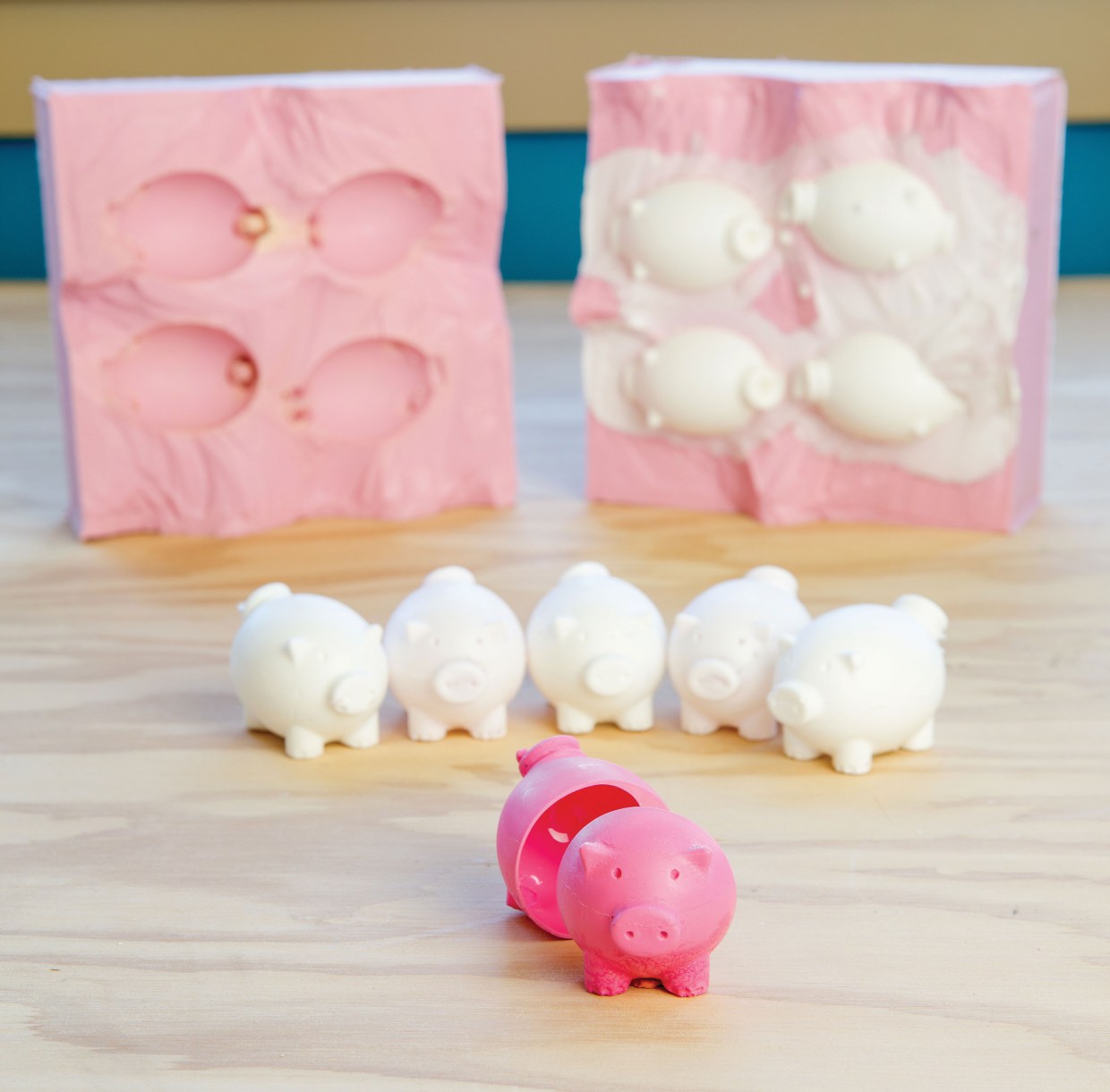The trick to this rotocaster design is the simple geared transmission it uses to transfer rotation in one axis to another axis that’s offset by 90°.
Place a bearing into each of the 2 top blocks on the outer frame and slide the 9½” threaded rod into one side.
In the center of the rod, thread on 2 ordinary hex nuts and use 2 wrenches to tighten them against each other as tight as you can. (This creates a grip point so you can later tighten lock nuts onto the rod.) Slide the rod through to the other side.
On the outside of the frame, tighten a nylon lock nut about 1″ down the threaded rod to hold that side in place. Again use 2 wrenches, one to hold the 2 plain nuts and one to tighten the lock nut.
Now thread the small pulley onto the end of the rod. It will be a tight fit at first but should rotate better as you get it going.
With the pulley threaded on, place one more lock nut on the end of the rod to trap the pulley. Don’t worry about tightening these lock nuts or the pulley yet; you’ll get to that in a minute.
It’s time to set your bevel gears into place. Thread one of them onto the bolt connecting the inner frame to the top of the outer frame. Again these should be a little tight but that’s a good thing. Screw it down tight against the nylon lock nut, then tighten another lock nut on top of it to grip it in place. Make sure it’s tight so the gear won’t slip on the bolt when it rotates.
Screw a nylon lock nut onto the bare end of the 9½” threaded rod, until the bolt is just past the end of the nut.
For this next step it’s helpful to have an extra set of hands. Place the second bevel gear into place against the first one at a 90° angle. Now use 2 wrenches to tighten the rod, while holding onto the nylon lock nut, until it threads all the way through the bevel gear. When it’s through, use one last lock nut on the end of the rod to clamp the gear in place between the 2 lock nuts.
It’s time to tighten up the 2 nuts on the other side. Make sure the inner nut is flush against the bearing and the pulley is firmly clamped between the 2 nuts.
Now if you turn the rod, the inner frame should spin!





